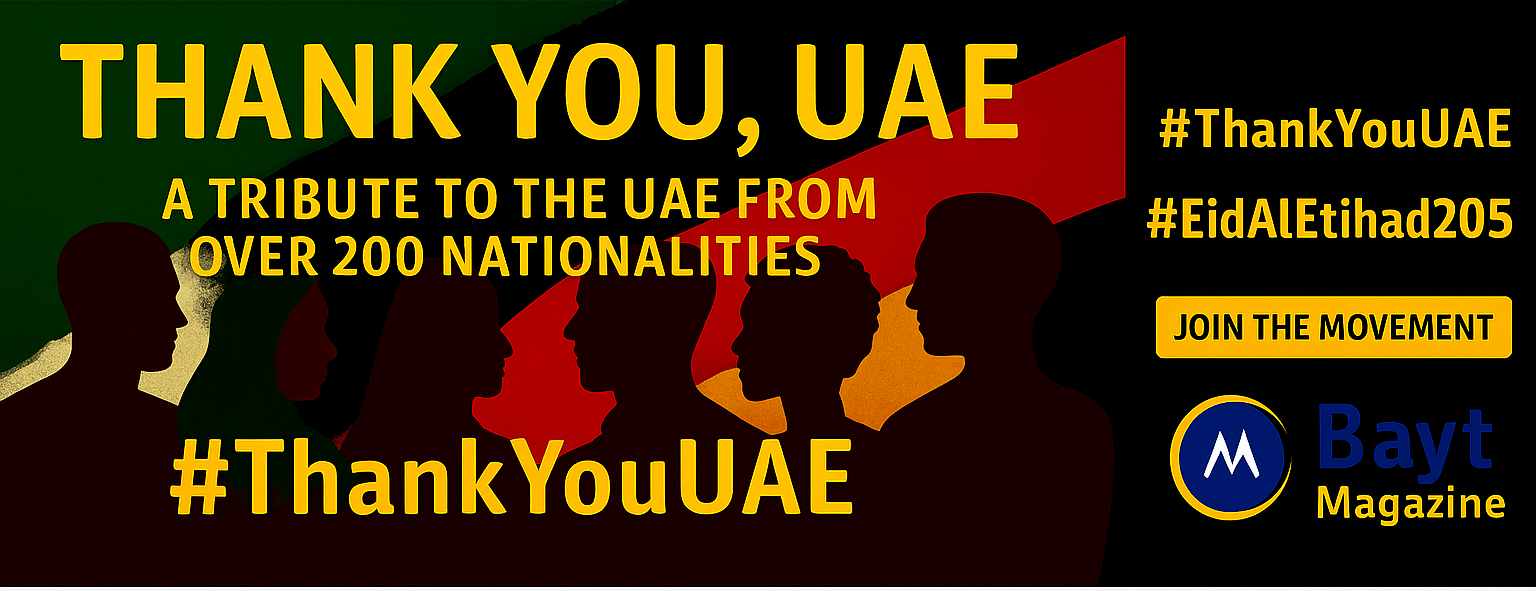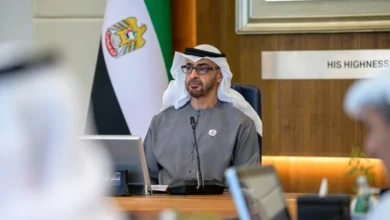
Etihad Rail Connects UAE Cities After 17-Year Development
Etihad Rail reshapes the scene of UAE’s transportation with its ambitious 1,200-kilometer network that connects all seven emirates. This monumental infrastructure project, after 17 years of development, stands as proof of the nation’s steadfast dedication to boost social and economic development through strategic connectivity.
The detailed etihad rail map shows an impressive network that serves urban and suburban areas throughout the country. Passengers are happy to await the etihad rail dubai abu dhabi connection that will cut travel time between these major cities to just 57 minutes. A high-speed service under development will reduce this experience to only 30 minutes. The etihad rail passenger service launch in 2026 expects to move an extraordinary 36.5 million passengers each year. The network’s strategically positioned etihad rail stations will make easier passenger movement and boost freight capacity beyond 60 million tons of goods yearly.
Etihad Rail completes 17-year national rail project
Image Source: Time Out Dubai
The UAE’s national railway dream became reality when Etihad Rail finished its landmark project after nearly two decades of planning and construction. The company started in June 2009 under Federal Law No. 2 with a clear mission to develop and run the country’s national railway network. This massive project unfolded in strategic phases and created crucial links between industrial centers, ports, and population hubs.
Stage One connects Shah to Ruwais
The 264-kilometer western section marked the start by connecting Shah and Habshan’s inland gas fields to Ruwais port. Commercial operations began in January 2016, right on schedule and budget. This route mainly transports granulated sulfur from Shah through Habshan to the export point at Ruwais. The success showed rail could be a safe and eco-friendly transport option in the region. Etihad Rail transported over 30 million tons of granulated sulfur by 2020 for Abu Dhabi National Oil Company (ADNOC) – replacing about 1.8 million truck trips.
Stage Two links Ghuwaifat to Fujairah
Stage Two stretches 605 kilometers from Ghuwaifat at the Saudi Arabian border to Fujairah on UAE’s eastern coast. Construction started in January 2020 and split into geographic sections:
- Package A (139 km): Connects Ghuwaifat to Stage One and Ruwais
- Package B (216 km): Runs from Tarif to Saih Shuaib
- Package C (94 km): Links Jebel Ali to Sharjah
- Package D (145 km): Reaches Fujairah through 15 tunnels in the Hajar Mountains
Etihad Rail launched this network expansion in 2023. The 900-kilometer stretch now connects all seven emirates from Ghuwaifat to Fujairah.
Final network spans 1,200 km across UAE
The complete Etihad Rail network will cover 1,200 kilometers across UAE, linking 11 cities and regions throughout all seven emirates. The network’s map reveals connections between strategic locations like Khalifa Port in Abu Dhabi, Jebel Ali Port in Dubai, Fujairah Port, Industrial City of Abu Dhabi, Al Ruwais, and Ghuwaifat. These strategic rail stations boost logistics capabilities and support regional economic growth.
The network fits into the planned Gulf Cooperation Council (GCC) railway system. Connections to Saudi Arabia, Qatar, Kuwait, Bahrain, and Oman should be ready by mid-2020s. The rail system will move 36.5 million passengers yearly and handle up to 60 million tons of cargo by 2030. This sets a new benchmark for transportation infrastructure in the region.
Etihad Rail connects UAE cities through strategic packages
Etihad Rail network’s construction was split into different geographical packages. This approach helped build the railway system across UAE’s varied terrain. Each package connects the nation’s industrial and commercial hubs.
Package A links Saudi border to Ruwais
The 139-kilometer Package A runs from Ghuweifat at the Saudi Arabian border to Ruwais and combines smoothly with Stage One. This section creates the first rail link between UAE and Saudi Arabia. The team finished construction in September 2021, two months earlier than planned. The project needed about 700,000 cubic meters of ballast and 30 million tons of earthwork. Etihad Rail’s production facility manufactured over 450,000 concrete sleepers for this section.
Package B and C connect Abu Dhabi to Dubai and Sharjah
Package B and C make up the UAE national railway network’s core. Package B covers 216 kilometers from Tarif to Saih Shuaib. Package C adds another 94 kilometers from Saih Shuaib to Sharjah. China Railway Construction Corporation and Ghantoot Transport & General Contracting won these packages in a joint venture worth AED 4.4 billion. These sections link major economic centers—Khalifa Port, Khalifa Industrial City (Kizad), and Jebel Ali Port. The connection spans 310 kilometers of industrial zones.
Package D extends to Fujairah through mountain tunnels
Package D stands out as the most challenging section. It runs 145 kilometers from Dubai and Sharjah to Fujairah. The route cuts through the rugged Al Hajar Mountains with nine tunnels spanning 6.9 kilometers. The Gulf region’s longest railway tunnel, stretching 1.8 kilometers, marks this package’s biggest achievement. This section can transport up to two million TEUs (twenty-foot equivalent container units) yearly between Fujairah and Khorfakkan ports. The construction includes 35 bridges, 32 underpasses, and 15 mountain tunnels built using advanced blast-tunneling technology.
Etihad Rail boosts freight and economic capacity
Image Source: Logistics Middle East
UAE’s freight transportation got a substantial boost when Etihad Rail’s commercial cargo services started running at full capacity in 2023. The network’s strategic location makes shared movement of goods easier between industrial hubs that connect four major ports and seven logistics centers throughout the country.
Freight services operational since 2023
Etihad Rail made it official in April 2023 – their freight train operations were “fully operational”. Sheik Mohammed bin Rashid, Vice President and Ruler of Dubai, launched the freight line in February 2023. The network’s Stage One has proven its worth since January 2016. It moves up to 22,000 tons of granulated sulfur daily from Habshan and Shah to Ruwais for ADNOC. This early win showed how viable and quick rail transport could be in the region, laying strong foundations for the expanded network.
60 million tons annual freight capacity
The Etihad rail network comes with impressive specs to handle UAE’s growing logistics needs. The system runs with 38 locomotives and over 1,000 multi-purpose wagons that can move 60 million tons of goods yearly. Each goods transport locomotive packs 4,500 horsepower (equivalent to 3,400 kilowatts), making them the most powerful freight train engines in the Middle East. These trains reach speeds up to 120 km/h. A single train carries loads equal to 300 trucks. This massive capacity cuts down road congestion while making transportation faster across the emirates.
Commercial agreements with major UAE industries
Etihad Rail has locked in several big commercial collaborations with prominent industry players. Western Bainoona Group stands out with one of the largest deals – moving 4.5 million tons of total aggregates yearly from Fujairah to logistics hubs in Abu Dhabi and Dubai. This partnership alone takes about 120,000 truck trips off the roads each year. The trains in this operation stretch about one kilometer with 70 wagons and carry around 7,000 tons per trip. Etihad Rail also partnered with Trojan General Contracting to move aggregates from quarries in Ras Al Khaimah and Fujairah. They’ve also joined forces with Abu Dhabi Customs to develop freight transport requirements.
Etihad Rail aligns with UAE Vision 2030 and GCC integration
“Connecting the Emirates via a national railway network strengthens our capabilities and competitiveness, and consolidates our unity.” — His Highness Sheik Mohammed bin Rashid Al Maktoum, Vice President, Prime Minister of the UAE and Ruler of Dubai
Etihad Rail stands as the life-blood to achieve broader national objectives outlined in strategic development frameworks. The project reflects UAE leadership’s vision of economic transformation through uninterrupted connectivity and environmentally responsible transportation solutions.
Supports Abu Dhabi Economic Vision 2030
The UAE’s long-term economic strategy depends heavily on the Etihad Rail network. H.H. Sheik Theyab bin Mohamed bin Zayed Al Nahyan directs Etihad Rail’s strategy that arranges with Abu Dhabi Economic Vision 2030 and UAE Vision 2021. The railway acts as a catalyst for economic growth and diversification, with plans to boost GDP contribution from non-oil sectors to over 60% by 2030. The etihad rail map shows strategically placed etihad rail stations that support the transition toward a knowledge-based economy.
Reduces road congestion and emissions
Etihad Rail offers significant environmental benefits and economic advantages. A single fully laden freight train eliminates 300 trucks from UAE roads and produces 70-80% less CO2 emissions than equivalent road transport. The network will help reduce CO2 emissions by 21% annually by 2050. These environmental effects equal removing 8.2 million tons of carbon dioxide yearly—the same as taking 375,000 vehicles off roads. The railway will save approximately AED24 billion in emissions over the next 50 years. This makes it essential to the UAE’s Net Zero by 2050 Strategic Initiative.
Future links to Oman and Saudi Arabia via Hafeet Rail
Regional integration expands beyond the etihad rail network’s domestic connectivity. Etihad Rail and Oman Rail created Hafeet Rail in April 2024. This joint venture will build a 303-kilometer railway connecting Sohar Port to the UAE National Rail Network. The USD 3 billion project will allow passengers to travel between Sohar and Abu Dhabi in just 1 hour 40 minutes. This first cross-country railway network in the Middle East passes through Al Ain with 60 bridges up to 34 meters high and tunnels spanning 2.5 kilometers. The Gulf Cooperation Council railway network includes Etihad Rail as a crucial component, with future connections planned to Saudi Arabia. These connections will deepen regional economic and cultural ties.
Etihad Rail represents a remarkable milestone in UAE’s infrastructure growth. This modern railway network spans 1,200 kilometers and connects all seven emirates. The project took 17 years to complete and shows UAE’s steadfast dedication to strategic planning. The construction teams split the work into smaller packages. This approach helped them tackle tough geographical challenges, especially when they tunneled through the Hajar Mountains.
The railway system’s benefits reach way beyond the reach and influence of transportation alone. The network can handle 36.5 million passengers yearly and will move 60 million tons of freight by 2030. This substantially improves UAE’s logistics capabilities. These improvements will boost the nation’s role as a global trade hub and support economic diversification plans outlined in UAE Vision 2030.
The environmental advantages are clear. A single freight train takes 300 trucks off the roads and cuts CO2 emissions by 70-80% compared to road transport. The railway network plays a crucial role in UAE’s Net Zero by 2050 Strategic Initiative. It will reduce carbon emissions by 8.2 million tons each year.
The project’s scope extends beyond UAE’s borders. The Hafeet Rail collaboration with Oman creates the Middle East’s first cross-country railway. Future connections to Saudi Arabia will strengthen GCC integration. This revolutionary infrastructure project connects UAE cities and places the nation at the heart of a growing regional transport network. It ensures economic growth and environmental sustainability for generations ahead.




